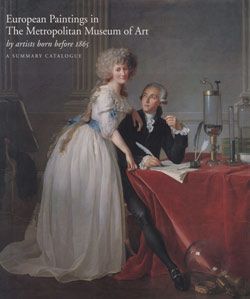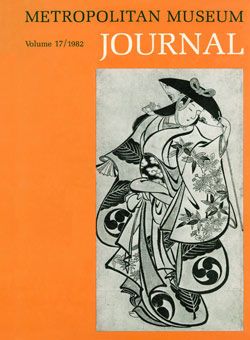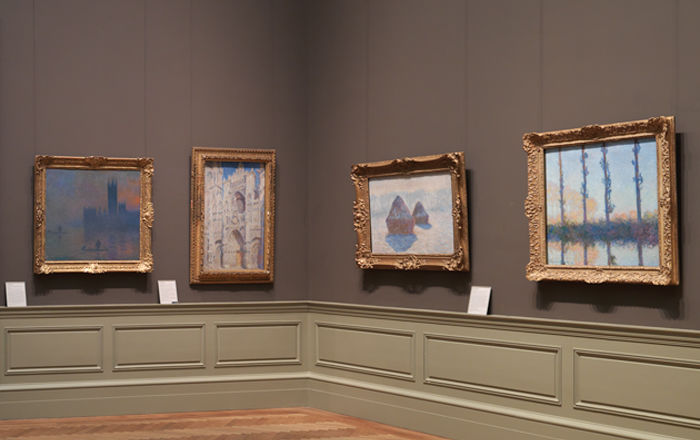The Artist: The painter, draftsman, author, and art theorist Henry Fuseli (Johann Heinrich Füssli) was born in Zürich in 1741. A son of the painter and art historian Johann Caspar Füssli (1706–1782), he received a classical education at Zürich’s famed Collegium Carolinum, where his teachers included the influential philologists and Anglophiles Johann Jakob Bodmer and Johann Jakob Breitinger, who prepared the way for Fuseli’s lifelong engagement with English literature. In 1761 he was ordained a Zwinglian minister but soon abandoned that profession. Over the next several years, he worked as an author, translator, and illustrator in Berlin and in London, his eventual adopted home. As an artist, Fuseli was mainly self-trained. With the encouragement of Sir Joshua Reynolds, he decided to become a painter and in 1770 traveled to Rome, where he spent eight years studying ancient art and pursuing his interest in the late works of Michelangelo and in Mannerist art in general. Fuseli and his circle in Rome rejected the neoclassicism of Johann Joachim Winckelmann (1717–1768; see The Met
48.141) and instead developed an aesthetic of excess and expressiveness. Back in London, Fuseli’s rising status as a painter led to positions of ever-increasing official prominence: admission to the Royal Academy of Arts in 1788, election to full Academician in 1790, promotion to Professor in 1799, and elevation to Keeper in 1804. He died in 1825 and was interred at Saint Paul’s Cathedral. Fuseli stands out for the rigor with which he mined the works of great authors—especially Shakespeare and Milton—for hitherto unrecognized subject matter for painting. His predilection for the bizarre and fantastical ensured his fame in modern times.
The Picture: The canvas at The Metropolitan Museum belongs to one of Fuseli’s most extensive and ambitious projects, the so-called Milton Gallery, a series of forty-seven paintings begun in 1791, inspired by
Paradise Lost,
Paradise Regained, and other works of the poet, and including seven scenes from Milton’s life. The Museum’s picture is based on an inconspicuous simile in
Paradise Lost which compares the dogs surrounding Sin, guard at the gates of Hell, to those who "follow the Night-Hag, when call’d / In secret, riding through the Air she comes / Lur’d with the smell of infant blood, to dance / With Lapland Witches, while the labouring Moon / Eclipses at thir charms" (II:662–66). In the picture, the night hag, thinly painted and phantom-like, appears in the upper background on a galloping horse, accompanied by a reeling pack of hellhounds. In the middle ground, right and left, witches dance to the beat of drums. The infant sacrifice to which Milton alludes is underway in the foreground. A hulking witch draped in a fur cape has laid out a naked child on a slab. In the immediate foreground, a figure that is visible only as two brawny hands ascends a ladder, holding aloft a gleaming white knife. The witch looks upward, awaiting the approach of the night hag, and begins to reach her right hand toward the blade. Her large, dagger-shaped braid, pointing directly at the child’s neck, leaves no doubt of what will happen next.
As documented in Fuseli’s correspondence, the painting was completed by 1796. It appeared in the first exhibition of the Milton Gallery in 1799. The initial version of the title, mentioned in a letter of 1794, was
The Night-Hag Visiting Lapland Witches. By the time of the exhibition, however, Fuseli had changed it to
Lapland Orgies, which Luisa Calè (2006, p. 163) has maintained is the more appropriate title, as the one the artist ultimately chose for presentation to the public. Fuseli sold the painting in 1808 to his future biographer John Knowles, whom he is said to have praised for selecting a work that "requires a poetic mind to feel and love" (Cunningham 1830, pp. 303–4).
In both Milton’s time and in Fuseli’s, Lapland, the northernmost region of Europe, was commonly associated with sorcery and paganism. Drums were known to accompany Lapland ceremonies—hence the frenzied figures in the left middle ground (Feingold 1982, p. 52). For the witches at the right, Fuseli based the head of the forward-facing dancer on the Rondanini Medusa (Glyptothek, Munich), a much admired ancient sculpture (see The Met
67.110.1), whose associations with terror would have been recognized by contemporary viewers (Feingold 1982, p. 53). Although Milton’s night hag is often interpreted as a reference to Hecate, the ancient goddess of witchcraft, Fuseli appears not to have pursued that classical allusion for his hag on horseback (Feingold 1982, p. 54). Instead, the painter appears to have seen the hag as a female demon, or succubus, and thus approached this canvas as another treatment of the nightmare theme to which he had already given famous expression (Feingold 1982, pp. 54–61; see
The Nightmare, 1781, Detroit Institute of Arts).
Given the general resemblance of the witch and child in the foreground to traditional representations of the Madonna and Child (see, for example, The Met
30.95.256), Calè suggested that Fuseli staged this witches’ sabbath and infant sacrifice as a mock Eucharist, possibly influenced by then-current Unitarian criticism of corruption within the Christian Church (2006, pp. 169–71).
Joshua P. Waterman 2013




